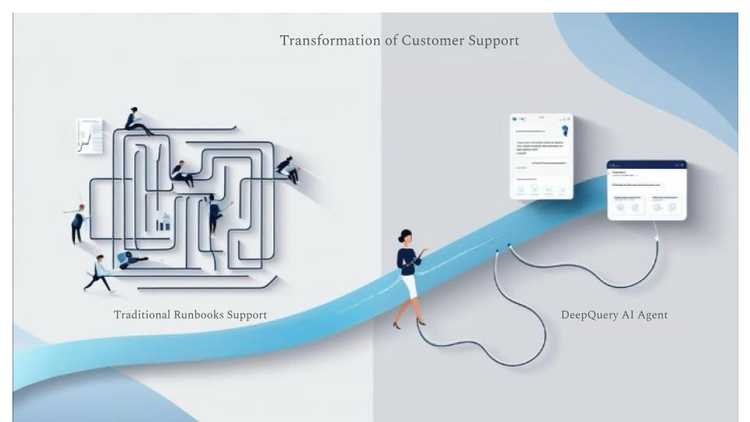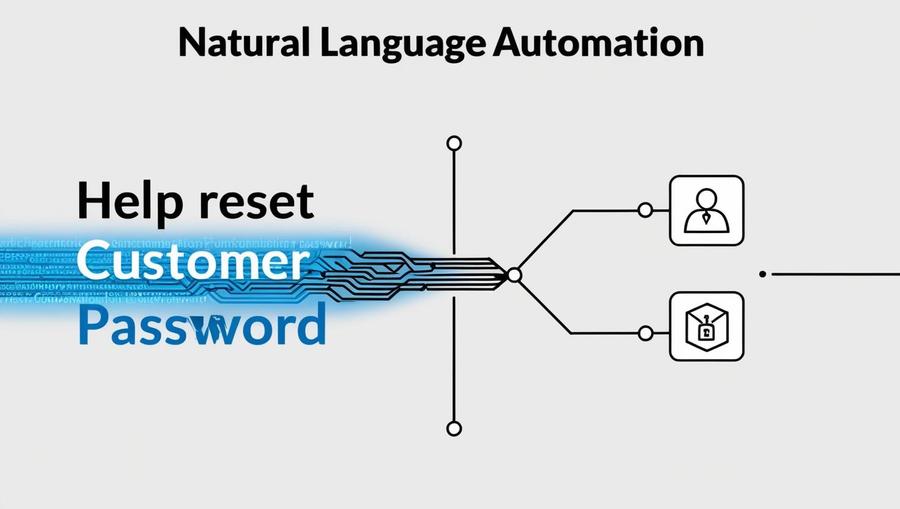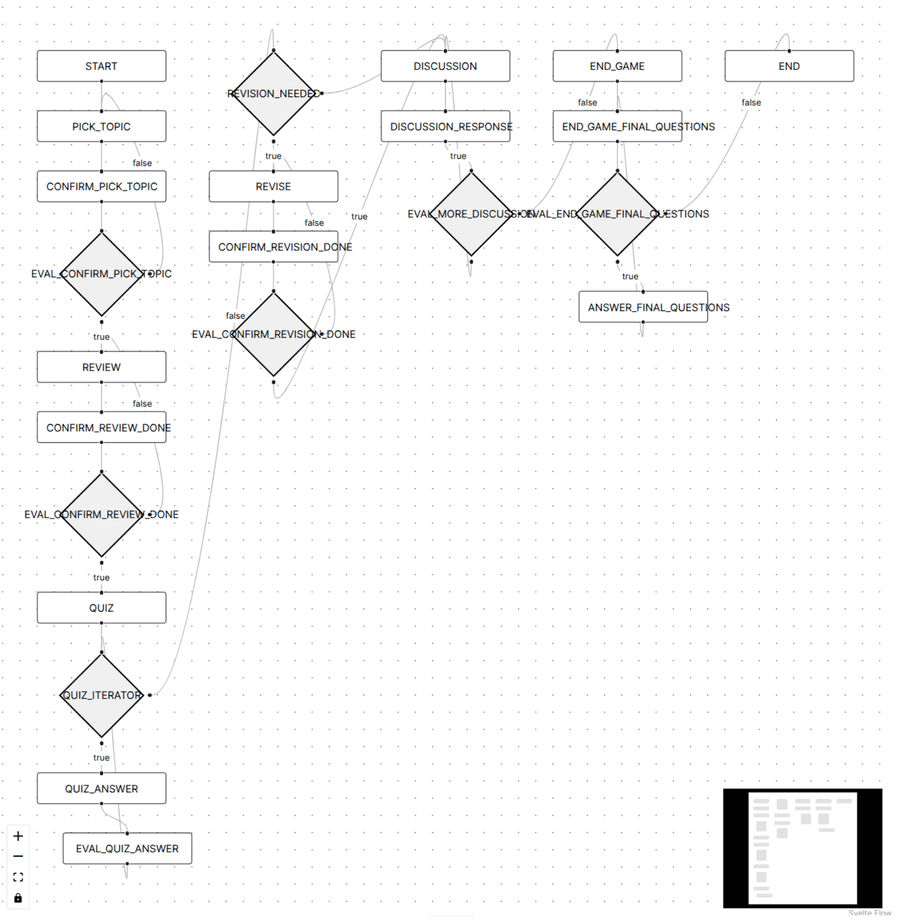
How DeepQuery uses Natural Language Automation to bridge the gap between human knowledge and machine execution.

The Evolving Landscape of Customer Support Excellence
In today's hyper-connected enterprise environment, customer support operations face unprecedented pressure. The numbers tell a compelling story: organizations face a 16% increase in average ticket volume [1], while 46% of customers expect companies to respond faster than four hours [2] making it more challenging for help desk agents. Meanwhile, support teams struggle with an average of 8.2 different systems to resolve a single customer issue.
This challenge is particularly acute in technical support environments where specialized knowledge, intricate workflows, and cross-system coordination create significant operational friction. With technical knowledge accelerating rapidly, support teams face an uphill battle staying current while maintaining the speed and accuracy customers demand.
Traditional support models are buckling under these demands. The conventional approach—creating detailed runbooks and training agents to follow them—creates a fundamental operational bottleneck: human execution of complex procedural knowledge. Even the most comprehensive documentation requires interpretation, navigation, and manual execution by support personnel.
The Hidden Complexity of First-Level Support
First-level support workflows offer a revealing window into this challenge. While often considered the "simplest" tier of support, these initial customer interactions require remarkable operational complexity:
Anatomy of a Universal First-Level Support Runbook
- Customer Authentication & Entitlement Verification
- Account lookup across multiple systems
- License validation
- Service level agreement verification
- Contract status confirmation
- Issue Documentation & Triage
- Systematic problem capture
- Environment configuration documentation
- Impact assessment
- Priority determination
- Case categorization
- Initial Diagnostic Collection
- System log retrieval
- Configuration validation
- Version compatibility verification
- Previous case correlation
- Resolution Pathway Selection
- Knowledge base search
- Common resolution application
- Troubleshooting script execution
- Escalation preparation
What appears straightforward in documentation becomes a complex dance across multiple systems, requiring support agents to constantly context-switch between knowledge repositories, ticketing platforms, diagnostic tools, communication channels, and customer-facing interactions.
The Automation Paradox
Organizations have long recognized this inefficiency, attempting to address it through various technological approaches:
- Robotic Process Automation (RPA): Requires rigid, predefined processes with minimal variation
- Business Process Management (BPM): Demands extensive technical implementation and maintenance
- Rule-Based Systems: Struggle with the complexity and nuance of real-world support scenarios
These solutions created a stark choice: automate the simple (creating minimal impact) or invest enormous resources to automate the complex (creating implementation barriers).
Introducing Natural Language Automation: DeepQuery
DeepQuery represents a fundamental breakthrough in enterprise automation—a natural language automation engine that eliminates the traditional barriers between human knowledge and machine execution. Rather than forcing organizations to translate their expertise into code or technical specifications, DeepQuery enables automation through the most natural form of knowledge transfer: plain language.
Converting Natural Language Workflow to Runbook
This section illustrates how DeepQuery empowers teams to create fully functional applications using simple English descriptions, transforming how processes are automated and implemented.
Natural Language Workflow
Imagine the team responsible for employee technical training. They define how training sessions should be conducted by simply describing their process in everyday language. This description becomes the basis for a natural language workflow.
Example:
- User initiates a training session for Kubernetes, picks a topic: “Hi, I’d like to learn about Kubernetes cluster management.”
- System proposes a topic and asks for confirmation: “Does that sound right to you?” User confirms: “Yes, that’s exactly what I want.”
- System evaluates the confirmation: “So you’re sure about this topic?” User: “Yes, let’s proceed.”
- System presents review material on Kubernetes cluster management. User reads and responds: “I understand most of it, and I’m ready for a quiz.”
- System confirms readiness for the quiz: “Are you certain you have no more questions about the review?” User: “Yes, I’m good.”
- System gives a short quiz: • User answers each question on node management and the control plane.
- System evaluates the answers and finds a knowledge gap. “It looks like you might need more clarity on node replacement.” User: “Right, I’m still a bit confused about that.”
- System revises the material covering node replacement details. User: “Now it makes sense—thanks for clearing that up.”
- System double-checks if further revision is needed. User: “No, I’m feeling confident.”
- System initiates a final discussion: User asks a few follow-up questions, then says: “No more questions.”
- User requests a training summary: “Please provide a recap of everything we covered.”
- System provides a summary report card (topics covered, quiz performance, strengths, areas for improvement, further recommendations) and asks if anything else is needed. User: “No, that’s all. Thank you!”
This shows how accessible and intuitive it is for team leaders to define their processes without technical expertise.
Runbook State Machine
DeepQuery then transforms these natural language descriptions into a structured, executable state machine. This isn't just a theoretical model; it's a real, operational application.
- Structured Execution: The visualization maps out the entire process, ensuring clarity and consistency.
- Real-World Application: This is the framework employees will later use for their training, created directly from their team's input.
Why This Matters
By allowing process owners to articulate their workflows in their own words, DeepQuery eliminates the need for complex coding or technical translation. It turns natural language into living applications, enabling rapid deployment and ensuring that best practices are consistently applied.
This approach empowers teams, accelerates onboarding, and enhances operational efficiency across the organization.
The Technical Foundation
At its core, DeepQuery combines advanced language understanding capabilities with an extensive integration ecosystem:
- Natural Language Understanding Framework
- Intent recognition for procedural workflows
- Entity extraction for technical concepts
- Contextual awareness across conversation flows
- Ambient learning from execution patterns
- Universal Integration Ecosystem
- Pre-built connectors to essential support platforms:
- Ticketing systems (Zendesk, ServiceNow, Salesforce Service Cloud)
- Knowledge repositories (Confluence, SharePoint, internal wikis)
- Communication channels (Slack, Teams, Email)
- Diagnostic tools (log analyzers, monitoring systems)
- Authentication services (Okta, Azure AD)
- Pre-built connectors to essential support platforms:
- Intelligent Workflow Orchestration
- Dynamic execution planning
- Exception handling with graceful degradation
- Human-in-the-loop collaboration models
- Continuous improvement through execution analytics
Transforming Runbooks into Living Automation
This architecture creates a revolutionary approach to support automation. Rather than static documentation, runbooks become executable workflows that:
- Adapt to context: Dynamically adjusting to specific customer scenarios
- Orchestrate across systems: Coordinating the complex dance between platforms
- Accelerate resolution: Compressing multi-step processes into seconds
- Ensure consistency: Eliminating procedural variation
- Learn continuously: Improving through each execution
Real-World Transformation: Case Study
A leading enterprise SaaS provider implemented DeepQuery to transform their first-level support operations with remarkable results:
Implementation Approach
- Natural Language Ingestion: Converted existing runbook documentation into executable workflows using DeepQuery's language processing capabilities
- Integration Landscape: Connected to their Zendesk ticketing system, Confluence knowledge base, Slack support channels, and diagnostic API endpoints
- Agent Augmentation Model: Deployed as an intelligent copilot for support personnel
Measurable Outcomes
- 67% reduction in time spent on routine diagnostic collection
- 54% improvement in first-contact resolution rates
- 89% decrease in procedural errors during support workflows
- 3.5x increase in knowledge base utilization
- 41% higher customer satisfaction scores for technical support
Similar transformations have been documented across industries. For instance, 60% of high-growth customer service teams use a help desk, significantly higher than slower-growing teams [3]. Additionally, 37% of organizations provide customer service agents with AI tools to enhance their performance [4].
The Future of Intelligent Support Operations
DeepQuery's natural language automation approach represents more than incremental improvement—it fundamentally reimagines how support organizations operate. By bridging the gap between human knowledge and machine execution, it creates a new operational paradigm where:
- Documentation becomes execution: Knowledge assets transform from reference material to active operational components
- Expertise becomes scalable: Best practices propagate instantly across the organization
- Agents become advisors: Support personnel focus on customer needs rather than system navigation
- Operations become adaptive: Support workflows evolve based on resolution patterns and success metrics
Beyond Support: The Automation Horizon
While customer support provides a compelling initial use case, the implications extend across the enterprise. The same natural language automation capabilities can transform:
- IT Operations: Incident response, change management, and system administration
- Human Resources: Employee onboarding, benefits administration, and policy guidance
- Finance: Expense processing, compliance verification, and reporting
- Sales Operations: Quote generation, contract management, and order processing
A recent McKinsey report suggests that intelligent automation could unlock $5.2 trillion in economic value by automating business processes across industries [5], with customer support representing a $265 billion opportunity alone.
References
[1] FinancesOnline. (2024). “71+ Essential Help Desk Statistics: 2024 Analysis of Trends, Data and Market Share” Retrieved from https://financesonline.com/help-desk-statistics-analysis-of-trends-data-and-market-share/
[2] Influx. (2023). "24/7 customer support stats you need to know." Retrieved from https://influx.com/blog/24-7-follow-the-sun-support-stats
[3] TrustRadius. (2021). "Help Desk Statistics and Trends for 2022." Retrieved from https://solutions.trustradius.com/buyer-blog/help-desk-statistics/
[4] InvGate. (2024). "+30 Help Desk Statistics & Facts To Watch Closely." Retrieved from https://blog.invgate.com/help-desk-statistics
[5] McKinsey & Company. (2023). "The economic potential of generative AI: The next productivity frontier." Retrieved from https://www.mckinsey.com/capabilities/mckinsey-digital/our-insights/the-economic-potential-of-generative-ai-the-next-productivity-frontier



